Rock Garden Tips: Easy Ideas for a Stunning Backyard
Creating a rock garden in your yard can add charm and natural beauty. It’s a great way to incorporate nature into your outdoor space using rocks, plants, and unique designs. You will find that rock gardens can be both beautiful and easy to maintain, making them a fantastic option for gardeners of all skill levels.
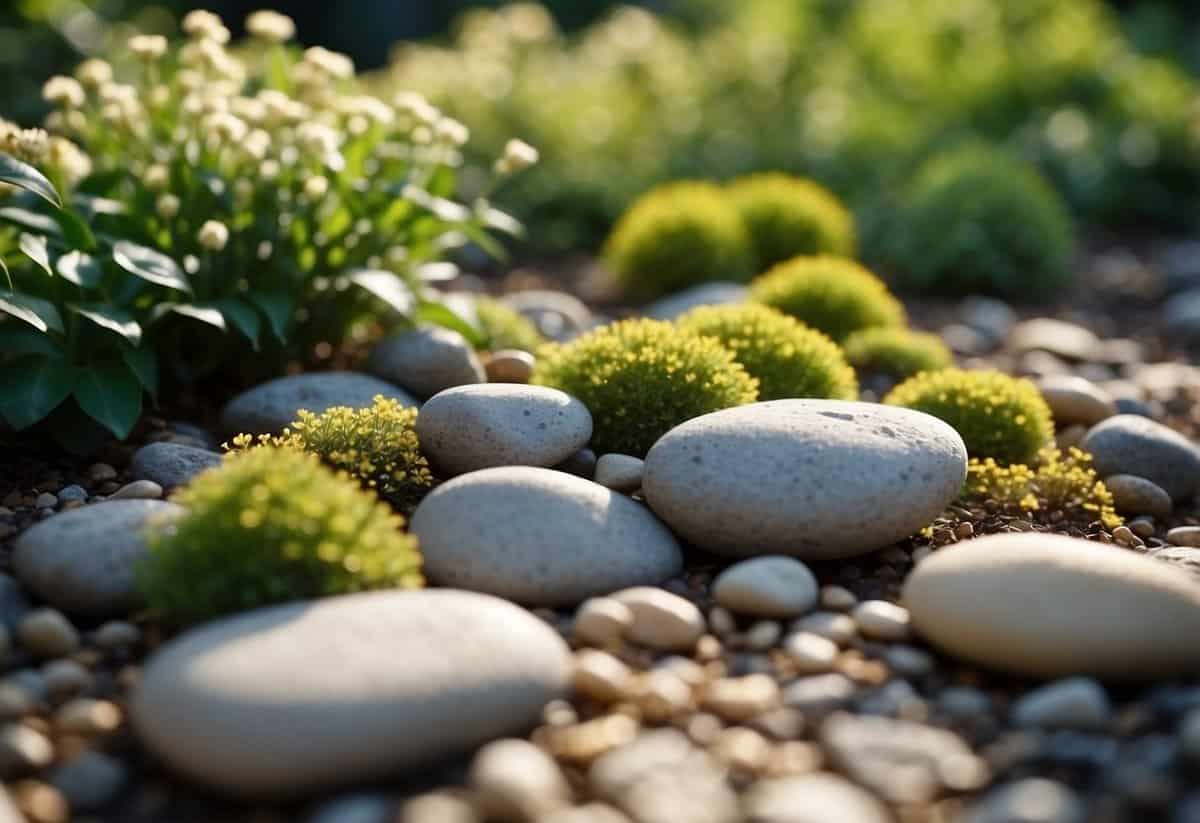
Are you looking for ways to make your yard more stunning and low-maintenance? Rock gardens offer an attractive solution that fits well with various landscaping styles. From picking the right location to choosing suitable plants, lots of factors come into play to create the perfect rock garden. This article will provide you with practical tips to get started on your own rock garden project.
1) Choose Hardy Plants

When creating a rock garden, it’s important to select plants that thrive in poor soil and can handle tough conditions. Look for plants like Euphorbia and Rock Cress.
These plants are resilient and can adapt to the rocky environment. Choosing hardy plants ensures your garden will flourish with minimal effort. Remember to consider the light and water needs of each plant to help them thrive.
2) Use a Variety of Stones

Adding different sizes and colors of stones brings interest to your rock garden. Large stones can act as focal points, while smaller pebbles fill in gaps.
Don’t forget to include gravel or small stones. These create a nice base and can contrast well with the bigger rocks.
Mix in various textures. Smooth river rocks alongside rough stones give your garden a natural look. For more ideas, check this guide.
3) Plan for All Seasons

To enjoy your rock garden year-round, choose plants that thrive in different seasons.
For spring, consider bulbs like narcissus and wild tulips, which add vibrant colors.
In summer, ornamental grasses and succulents can handle the heat.
For fall, include hardy perennials that showcase autumn hues.
In winter, evergreen shrubs and winter-blooming flowers keep the garden lively.
4) Mind the Soil Type
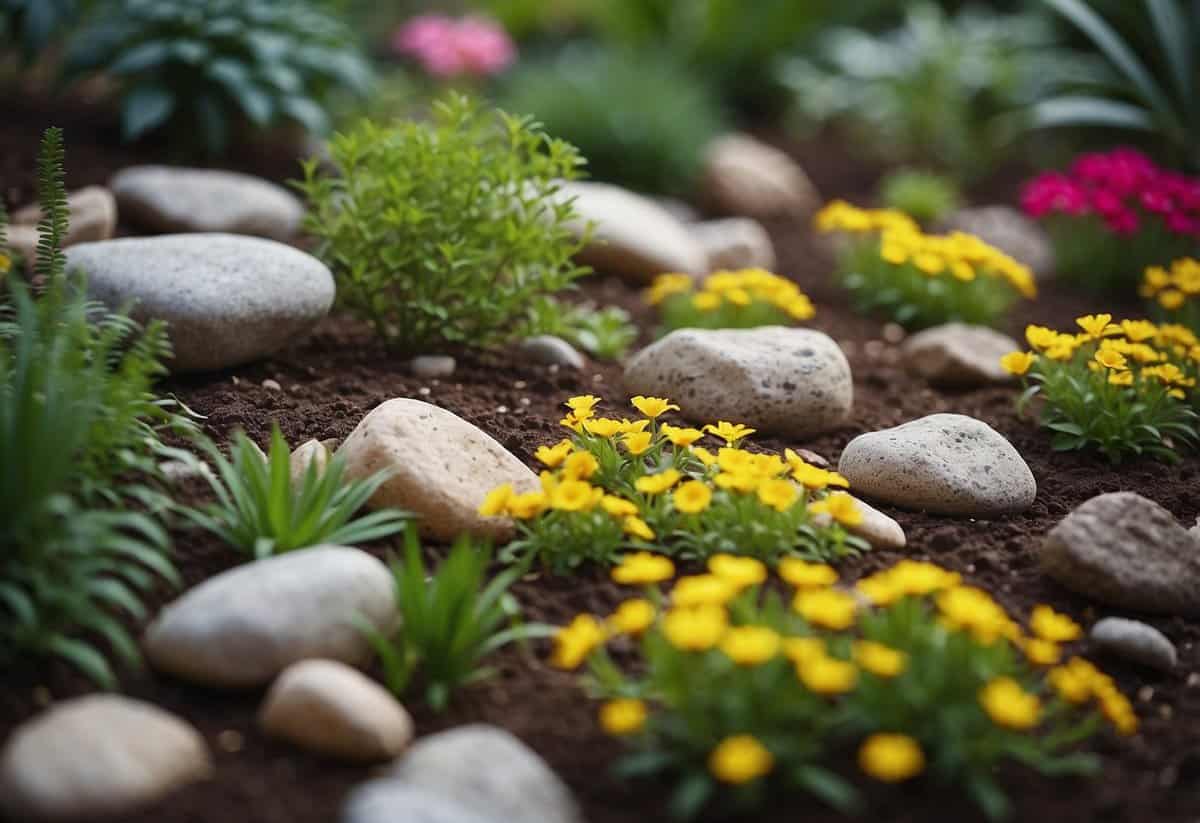
Pay attention to the soil type for your rock garden. Good soil preparation is key to a healthy garden.
Rock gardens need well-draining soil. Mix native soil with sand and gravel for the best results. This helps prevent water from pooling around plant roots.
Layer your soil properly. Start with large chunks like broken bricks or rocks for a solid foundation. Then, add your soil mix on top. This creates the right balance for plant growth.
5) Consider Drainage
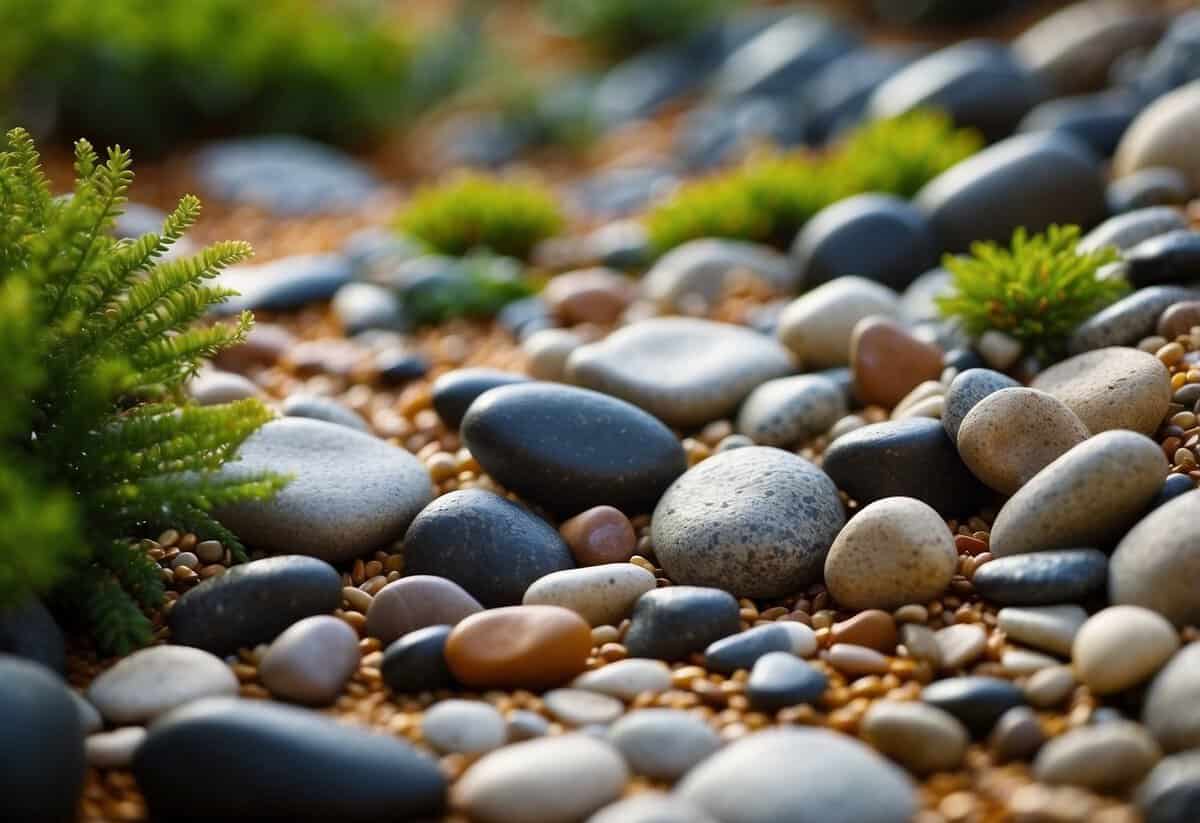
Good drainage is key for a successful rock garden. Rocks and soil must work together to prevent water from pooling.
If water doesn’t drain well, it can harm your plants. Position your rock garden on a slight slope if possible.
Ensure the soil mix promotes drainage. Adding sand or gravel can help. These adjustments keep your rock garden healthy and vibrant.
6) Incorporate Water Features
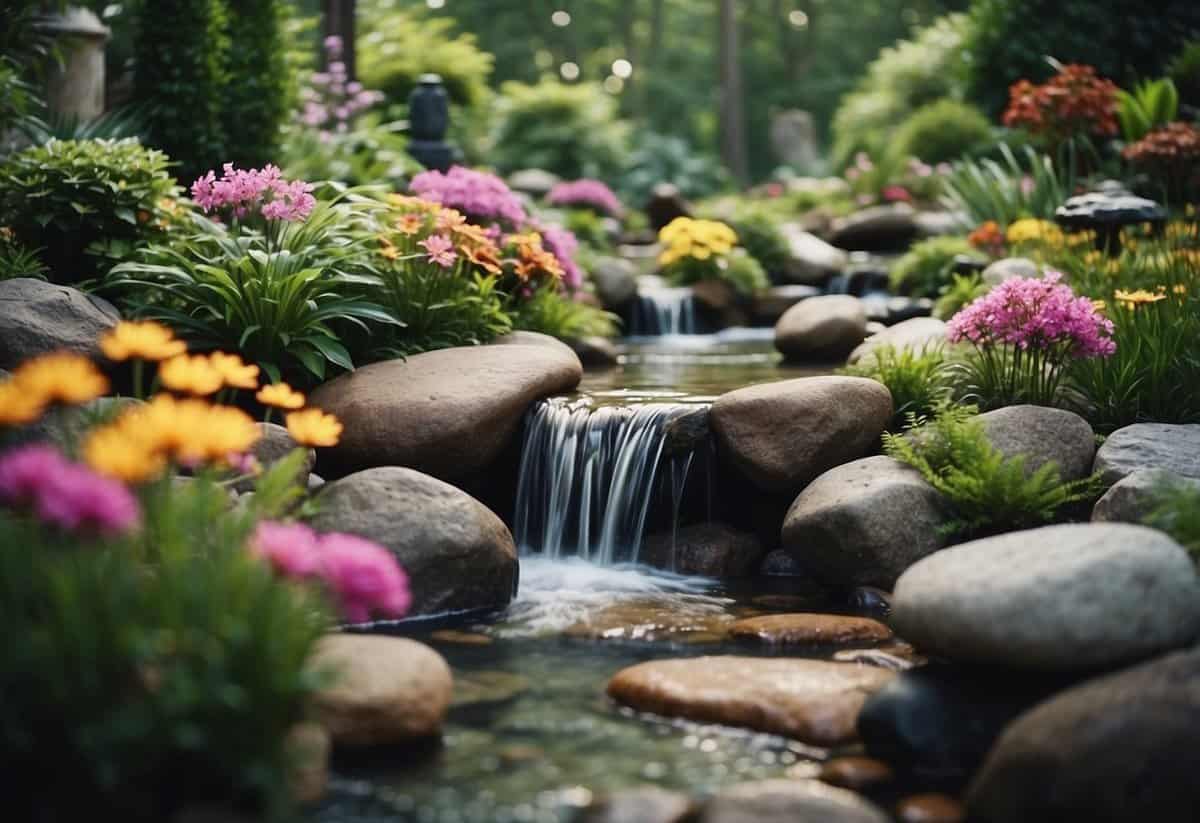
Adding water features to your rock garden can create a calming atmosphere. Waterfalls, ponds, or small streams attract birds and pollinators, bringing life to your garden.
A water feature can also soften the look of rocks, making the space more inviting. For practical tips on how to integrate water, check out these expert tips.
Even a simple birdbath can have a big impact on your garden’s appeal. The sound of running water can create a peaceful retreat in your own backyard.
7) Group by Height

When designing your rock garden, it’s helpful to arrange plants based on their height.
Tall plants, like ornamental grasses or small shrubs, should go in the back. This adds depth and ensures they don’t block shorter plants.
In the middle, plant medium-height plants. These could be perennials that complement the taller plants.
At the front, use creeping groundcovers to soften the edges of the rocks. This ensures every part of your garden stands out. For more tips, check out this guide.
8) Add Vertical Elements

Adding vertical elements to your rock garden can create a sense of height and depth. Use small shrubs and ornamental grasses to achieve this effect. These plants can grow well in rocky environments and provide a lovely contrast to the hard surfaces.
Consider growing some plants like wild tulips and alliums. These sturdy bulbs can add a pop of color and stand out among the rocks. For more space-saving ideas, growing vertically can also help protect plants from pests and diseases.
9) Include Ground Covers

Ground covers are a great way to fill gaps between the rocks in your garden. They prevent erosion and keep the soil moist.
Consider using creeping plants like thyme or sedum. These plants spread easily and create a lush green carpet.
Ground covers also add texture and color to your garden, making the rocks stand out nicely. For more ideas, check out rock garden plants.
10) Use Natural Mulch
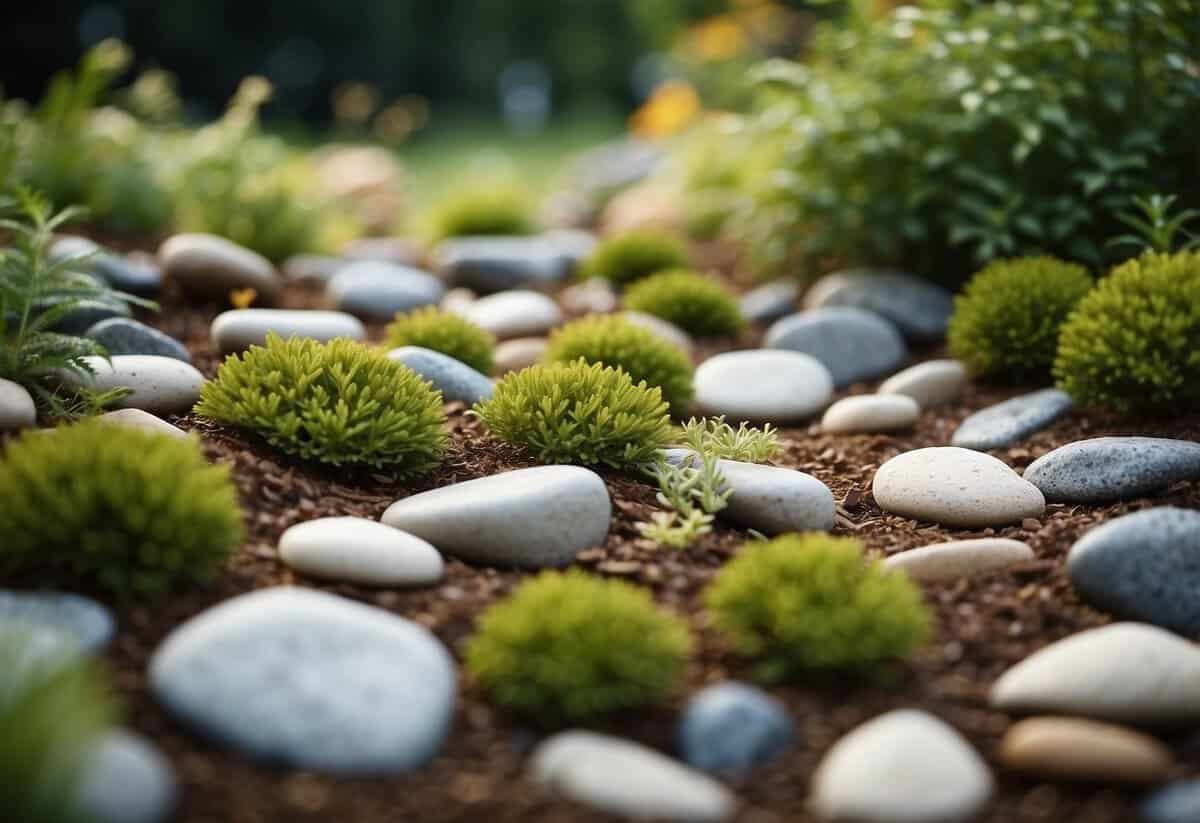
Natural mulch can enhance your rock garden. Mulch like bark or compost adds nutrients to the soil and retains moisture.
Using mulch around rocks helps prevent weeds. It keeps your garden looking tidy and well-maintained. Make sure not to use rocks as mulch because they can heat up and harm plant roots.
A thin layer of mulch can also improve soil drainage. Keep it about 2-3 inches thick around plants to ensure they thrive.
Choosing The Right Location

Picking the best location for your rock garden means focusing on how much sunlight the area gets and what the soil is like. These key factors will affect which plants you can use and how well they will grow.
Sunlight And Shade
Your rock garden will do best with plenty of sunlight. Most rock garden plants need at least six hours of sunlight each day. Choose a spot in your yard that gets a lot of sun.
If your chosen location has some shade, be sure it matches the needs of the plants you plan to use. Some plants can handle partial shade, but few thrive in full shade. Pay close attention to how the sun moves over your yard during the day before you decide on a spot.
Even a small amount of direct sunlight can make a big difference. Track how much light different parts of your yard get, and pick a site accordingly. A sunny spot will help ensure your rock garden stays healthy and vibrant.
Soil Conditions
Soil quality is very important for rock gardens. You should pick an area with well-drained soil, as most rock garden plants don’t like their roots to stay wet for long.
To check drainage, dig a small hole and fill it with water. If the water drains within an hour, the soil is likely well-drained. If not, you may need to improve it by adding sand or gravel.
Soil can vary a lot. It might be sandy, clay-like, or loamy. Testing your soil’s pH can help too. Most rock garden plants prefer slightly acidic to neutral soil. You can buy a test kit at a garden center.
Good soil means healthier plants, so spend time preparing it before planting. Enhancing drainage and ensuring the right pH can make a huge difference in your rock garden’s success.
Selecting The Best Plants

Choosing the right plants for your rock garden is essential for creating a beautiful and sustainable landscape. Focus on native species and drought-resistant plants to ensure they thrive in your garden’s conditions.
Native Species
Selecting native species is a smart choice for your rock garden. Native plants are adapted to the local climate and soil, making them more resilient and easier to care for. They require less water and are less prone to pests and diseases.
Some excellent native plants for rock gardens include wildflowers like columbine and purple coneflower. These plants not only add color but also support local wildlife, such as butterflies and bees.
Benefits of Native Species:
- Low maintenance
- Adapted to local conditions
- Supports local wildlife
Adding native grasses like little bluestem can offer texture and height to your garden. These grasses are hardy and can thrive in rocky, well-drained soil.
Drought-Resistant Plants
Drought-resistant plants are ideal for rock gardens, especially in areas prone to dry spells. These plants have adapted to survive with minimal water, making them a perfect match for rocky, well-drained soil.
Some popular drought-resistant plants include the golden barrel cactus, which has a striking round shape and vibrant yellow color. Sedums and sempervivums are also great choices. These succulents can store water in their leaves, helping them endure dry periods.
Advantages of Drought-Resistant Plants:
- Require minimal watering
- Ideal for hot and dry climates
- Durable and long-lasting
Consider using lavender and thyme for their drought resistance and lovely fragrance. These herbs also attract pollinators and can be used in cooking, adding a practical element to your garden.







